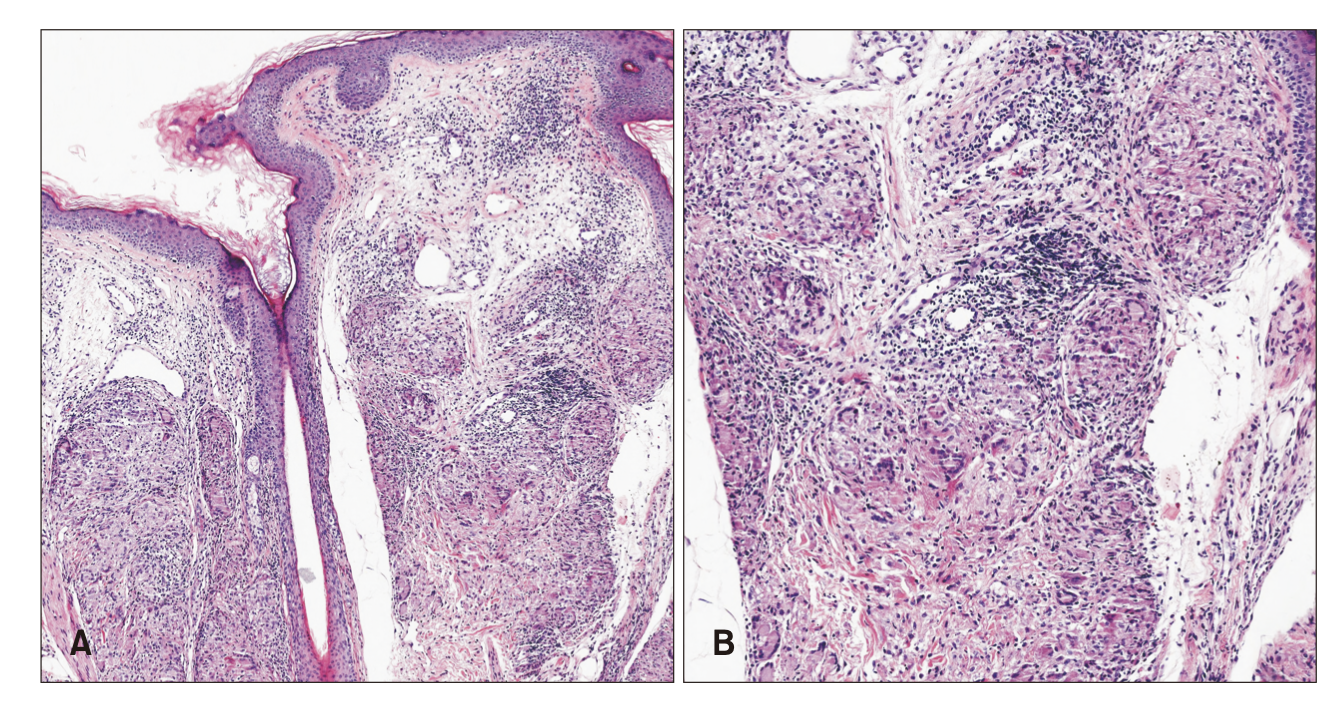Isolated Scalp Sarcoidosis Causing Hair Loss
Scalp Sarcoidosis - without Systemic Involvement
Sarcoidosis is an inflammatory disease that has the potential to affect many different organs of the body. The cause of sarcoidosis is still not known. The lungs & lymph nodes are most commonly affected areas affected by sarcoidosis and the eyes are a close third place. About 30 % of patients with systemic sarcoidosis will also have skin sarcoidosis as well and so the skin is also a common organ of involvement. In addition to the lungs, lymph nodes, eyes and skin, one must keep in mind that the liver, nervous system, heart and kidneys can all be involved by sarcoidosis.
Anyone can be affected by sarcoidosis worldwide although some studies have suggested that individuals of Irish, Scandinavian, and those of the African diaspora are more likely to have sarcoidosis. Females are more commonly affected than males.
Many patients with sarcoidosis have symptoms of some kind but it’s possible for a very small proportion of patients with sarcoidosis to be asymptomatic. About 50% have respiratory symptoms like shortness of breath or cough. Some patients have fever and weight loss. A variety of other symptoms are possible depending on the organ affected. Sometimes the skin is the first site of involvement. Therefore, dermatologists need to understand the different ways this disease presents itself so that they can help make the diagnosis in early stages.
How does “scalp sarcoidosis” present ?
Scalp sarcoidosis is quite uncommon. In fact, there has been less than 50 cases published in the medical literature so far. Many of these cases have been African American women who have systemic involvement. Scalp sarcoidosis may be non-scarring or scarring. Skin lesions of sarcoidosis often have an orange color and may look very similar to lichen planopilaris, discoid lupus, scleroderma or even alopecia areata at first glance.
Trichoscopy is a very important first step when evaluating lesions and this is generally followed by doing a scalp biopsy. It’s the scalp biopsy however that helps confirm the diagnosis. Confirmation of a diagnosis of scalp sarcoidosis is very important - especially if the patient is unaware that they have systemic disease. Most patients with scalp sarcoidosis will have systemic involvement.
The Diagnosis of Sarcoidosis
The key to the diagnosis of sarcoidosis is the finding of a specific pattern of inflammation known by pathologists as “non caseating granulomas” in various organs of the body. It must be noted that there is no one single test that proves a patient has sarcoidosis. Rather the entire clinical picture and radiographic picture needs to be taken into account. Diagnosis of sarcoidosis generally requires fulfillment of three criteria:
(1) a compatible clinical and radiologic presentation that suggests sarcoidosis
(2) pathologic evidence of noncaseating granulomas somewhere in the body (could be scalp).
(3) exclusion of other diseases with similar findings, such as infections or malignancy. Mycobacterial and fungal infection should always be excluded.
A variety of tests can be considered after the clinician obtains a good history and preforms a complete examination. These include a) CBC b) AST, ALT c) creatinine d) serum calcium (elevated in 10-13 %) and urine calcium e) ACE levels (elevated in 50 % of patients) f) ALP levels. g) Chest - x-ray and pulmonary function test h) ECG i) Eye examination j) PPD or Quantiferon (for tuberculosis)
Kim et al, 2022
Kim and colleagues from Korea recently reported a healthy 78-year-old female patient who presented a diffusely itchy, red, scaly thickened plaque on the occipital scalp. The area had been troublesome for 20 years.
Hair loss at the back fo the scalp in 78 year old female. The pathology showed a diagnosis of sarcoidosis. The patient had diffusely, red, scaly, lichenified plaque accompanied by hair loss. Photo B on the right shows the significant hair growth that occurred after 11 months of using a topical steroid. Image from Kim JC and Lee ES. Unusual Case of Scalp Sarcoidosis with Alopecia: An Only Manifestation of Cutaneous Sarcoidosis without Systemic Involvement. Ann Dermatol. 2022 Apr;34(2):154-156. Image used with creative commons license.
A skin biopsy taken from the edge of the area showed multiple noncaseating and naked granulomas with Langhans-type giant cells. A Periodic acid-Schiff stain and polymerase chain reaction test for Mycobacterium tuberculosis was negative. Eye examinations and heart/lung examinations were negative for systemic invovlement.
Scalp biopsy showing a diagnosis of sarcoidosis. Here, the pathologist notes multiple, well-circumscribed, nodular aggregates of histiocytes and surrounding mild lymphocytic cells infiltrating the dermis, and a few multinucleated Langhans type giant cells. Image from Kim JC and Lee ES. Unusual Case of Scalp Sarcoidosis with Alopecia: An Only Manifestation of Cutaneous Sarcoidosis without Systemic Involvement. Ann Dermatol. 2022 Apr;34(2):154-156. Image used with creative commons license.
FINAL DIAGNOSIS: scalp sarcoidosis without systemic involvement
Treatment
The patient was treated with a topical steroid (desoximetasone, 0.25%) twice daily. Hair loss stopped with topical steroid treatment. Redness resolved and a significant amount of hair growth occurred as shown in the photo
Comment and Discussion
This case is interesting because isolated scalp sarcoidosis is rare. In other words, most patients of with scalp sarcoidosis reported in the medical literature have other skin findings on the face, neck, trunk, or extremities and most have systemic involvement (usually in the pulmonary tissue or lymph nodes).
Given the strong association between sarcoidal alopecia and systemic sarcoidosis, a thorough evaluation of any patient is indicated if alopecia is the initial presenting manifestation.
The case presentation reminds us that sarcoidosis is a diagnosis of exclusion and it’s important to do a thorough work up to rule out other conditions. The patient had TB testing and stains on the biopsy suggestive there was no fungal contribution.
REFERENCE
Kim JC and Lee ES. Unusual Case of Scalp Sarcoidosis with Alopecia: An Only Manifestation of Cutaneous Sarcoidosis without Systemic Involvement. Ann Dermatol. 2022 Apr;34(2):154-156.
This article was written by Dr. Jeff Donovan, a Canadian and US board certified dermatologist specializing exclusively in hair loss.


